|
April 1959 Popular Electronics
 Table
of Contents Table
of Contents
Wax nostalgic about and learn from the history of early electronics. See articles
from
Popular Electronics,
published October 1954 - April 1985. All copyrights are hereby acknowledged.
|
 Servomechanisms are all around
us in the form of electronically actuated controls for our cars, stepper motors
in our ink jet printers, overhead garage door openers, and anywhere else you can
identify where a combination of electricity and mechanics operates with some form
of positional sensing and feedback. The author of this circa 1959 article entitled
"What Is a Servomechanism" in one instance declares a control circuit with a human
operator being part of the operation as an "open loop," but I contend that the human
element is actually part of the loop and therefore constitutes a component which
closes the feedback loop. A human-in-the-loop system can still be considered an
electromechanical entity. Those of us who operate
radio-controlled model airplanes, boats, cars, etc., are very familiar with
servos for moving control surfaces as commanded by the transmitter's joystick position.
Through visual observations and hand inputs to the transmitter, we close the servo
loop that controls the R/C airplane, helicopter, drone, car, boat, etc. Servomechanisms are all around
us in the form of electronically actuated controls for our cars, stepper motors
in our ink jet printers, overhead garage door openers, and anywhere else you can
identify where a combination of electricity and mechanics operates with some form
of positional sensing and feedback. The author of this circa 1959 article entitled
"What Is a Servomechanism" in one instance declares a control circuit with a human
operator being part of the operation as an "open loop," but I contend that the human
element is actually part of the loop and therefore constitutes a component which
closes the feedback loop. A human-in-the-loop system can still be considered an
electromechanical entity. Those of us who operate
radio-controlled model airplanes, boats, cars, etc., are very familiar with
servos for moving control surfaces as commanded by the transmitter's joystick position.
Through visual observations and hand inputs to the transmitter, we close the servo
loop that controls the R/C airplane, helicopter, drone, car, boat, etc.
After Class: What is a Servomechanism?
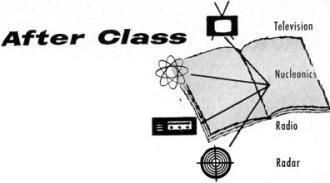 By Harvey Pollack By Harvey Pollack
Before the age of electronics, machinery was controlled directly by the hands
of the operator-hands which would shift a gear, pull a lever, or apply a brake.
Today's machinery is controlled by the push of a button or the twist of a knob,
and many measurements and decisions are made automatically by electronic circuits.
Wherever electronics and machinery work together we are apt to find some kind of
servomechanism in operation.
An automobile driver is the human counterpart of a servomechanism - he watches
and controls a machine. As he steers his car along a winding highway, he constantly
makes small corrections on his steering wheel to keep the car on the road. His eyes
measure distances, his brain makes simple decisions, and his arm muscles exert corrective
pressures on the steering wheel. A servomechanism performs the same function, but
it is faster, more sensitive, does not make mistakes in judgment, and operates continuously.
The definition of a servomechanism recommended by the Feedback Control Committee
of the American Institute of Electrical Engineers is: "A feedback control system
in which the controlled variable is mechanical position." Let's examine, in practical
terms, what that means.
The ABC's of Servos
Consider our automobile driver again. From his reactions we can determine the
requirements of a machine that could capably replace him.
Before the start of the drive, he accepts the fact that the road divider must
always remain from six to fifteen inches from his front left wheel if he is to navigate
the highway turns and straightaways safely. During the trip, he must be aware of
the separation that actually exists during every instant of time. Then he must compare
the actual separation between his wheels and the white line with the desired separation
that was initially stipulated. This might be called the error in the car's path
at that instant. Once the error is determined, he must then dictate a corrective
order to his arm muscles so that they can apply a force in the proper direction
to eliminate the error.
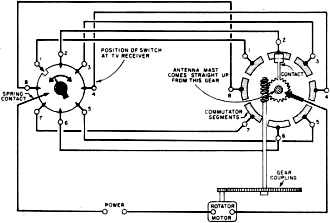
Fig. 1 - Example of an "open-loop" type servomechanism.
It serves practically as an antenna rotating mechanism for TV installations. "Open-loop"
refers to the need for a human control element in the servomechanism system.
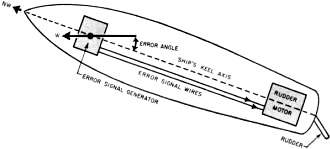
Fig. 2 - A course control system as used in ocean-going
vessels is a typical application of a "closed-loop" type of servomechanism. Once
the course has been set, no further human guidance or readjustment is needed for
operation.
If we now analyze these steps, we can state the ABC's of servos. A servo must:
(A) Accept instructions that tell it what should be done; (B) Be aware of the actual
conditions that exist at every instant; (C) Compare what is being done with what
should be done; (D) Dictate orders that will correct the error noted by this comparison;
and (E) Energize some mechanism that can follow these orders.
Open-Loop System
Consider the antenna rotator servo shown in Fig. 1. This is referred to
as an "open-loop" servo system because a human operator is required as one of the
links in the ABC chain. The knob at the TV set is secured to a disc in contact with
all the contact points save the one that happens to be in line with the notch cut
in the disc. A permanent spring contact is made to the disc as shown.
Suppose the TV viewer decides that he would like to rotate his antenna from position
2 to position 1. He turns the knob to position 1, bringing the notch in line with
contact point 1 at the same time; but when he does this, contact point 2 touches
the disc and feeds electrical energy to the motor through commutator segment 2.
Each time the commutator arrives at a new segment, the power flows uninterruptedly
to the motor until it reaches segment 1, when the circuit is again opened and the
motor stops, leaving the mast in the desired position.
Note that the human operator must dictate the necessary instructions to the servo
by rotating the positional switch to the desired setting. In a "closed-loop" system,
a human operator is totally unnecessary.
Closed-Loop System
Imagine that the course of a ship is to be due west and that its gyro-compass
has been set for this direction. Along comes a gust of wind or an ocean current
that tends to swing the prow of the ship to the north. The gyro-compass, of course,
continues to point to the west as the boat turns under it, thereby producing an
error angle between itself and the boat's axis.
If the compass is coupled to an electrical generator of a suitable type which
can feed an error signal proportional to the error angle to a rudder motor at the
stern, then the rudder will swing over to an extent that will just correct the deviation
from the proper course.
The error angle represents the comparison between what is actually being done
and what should be done. Corrective orders are dictated by means of an electrical
signal that varies with the amount and direction of the error; this order signal
then energizes a rudder control motor which makes the necessary correction in course.
Thermostat Control
When you set the thermostat of your oil-burner, you have issued instructions
that it keep the house at, say, 70°F. The bi-metallic strip inside the thermostat
retains "awareness" of existing temperatures by bending toward an electrical contact
as the house cools. When the contacts finally close as the temperature goes below
70°F, the thermostat issues a corrective signal in the form of a current to the
relay of the oil burner.
If you would like to experiment with thermostatic control to get the "feel" of
the ABC's of servos, you can pick up an old fluorescent starter and use it as the
base for a thermostatically controlled chick incubator or a transmitter crystal
oven. Pry up the four sheet-metal fingers that secure the disc base to the metal
casing and lift out the whole inside structure. If a capacitor is present (some
starters omit the capacitor), clip it out by cutting its leads close to the disc
base.
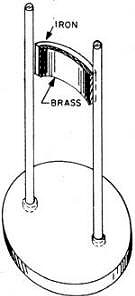
Fig. 3. - Modification required to convert a fluorescent
lamp starter into a sensing element of a thermostatic control circuit. "Before "
view (left) shows internal assembly of starter after protective glass is broken.
"After" view (right) illustrates modification made to the contact to enable use
of the starter as a thermostatic switch.
Wrap a single layer of cloth around the glass tube, place it between the jaws
of your vise, and apply pressure gradually until the glass just cracks. Be careful
not to damage the bi-metallic assembly that is now exposed. The concave portion
of the curved strip is brass and the convex section iron. Since brass has a higher
coefficient of linear expansion than iron, this bar will tend to straighten when
heated, i.e., it is normally off and makes contact when its temperature rises.
To reverse this action, bend the free vertical bar as shown in Fig. 3 so
that the inner brass face of the strip barely touches the bent bar at room temperature.
The temperature at which contact will be broken will then depend upon the extent
to which the strip presses on the vertical bar. This can easily be adjusted experimentally
by further bending either to the right or left.
An incubator or oven thermostat may be set up easily using the circuit of Fig. 4.
The "heater" is a 25-watt incandescent lamp blackened with candle-black or sprayed
lightly with flat black lacquer. The enclosure in which it is placed should be fairly
well insulated so that it retains its heat.
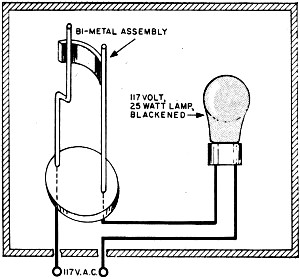
Fig. 4 - Wiring and installation of modified bi-metallic
element in a homemade experimental thermostatically controlled incubator or crystal
(oscillator) oven.
Posted September 2, 2020
(updated from original post on 12/4/2013)
"After Class" Topics
|

































